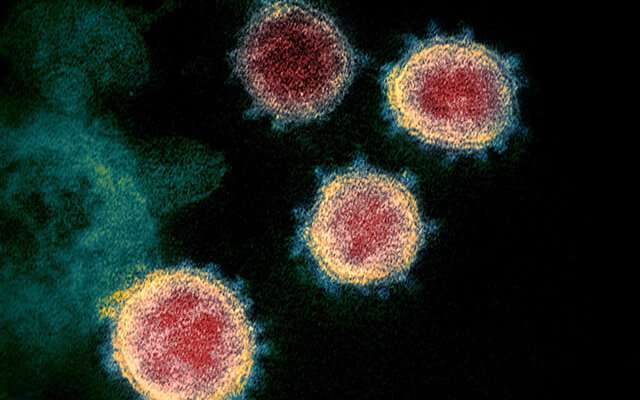
Although the SARS-CoV-2 outbreak emerged suddenly in the popular market of exotic and wild animals in Wuhan in December 2019, phylogenetic studies show that coronavirus was already present in latency phase in October in the province of Hubei. During this latency phase, the infection followed its silent course and spread among the population in a stochastic way without showing epidemic signs.
This is one of the conclusions in the article published in the journal Frontiers in Medicine by a team with the participation of the experts Jordi Serra-Cobo and Marc López, from the Faculty of Biology and the Biodiversity Research Institute (IRBio) of the University of Barcelona.
The first author of the paper is Roger Frutos, from Centre for International Cooperation in Agricultural Research for Development (CIRAD, France). Another participant in the study is Christian A. Devaux, from the French National Centre for Scientific Research (CNRS).
COVID-19: conjunction of biological and social factors
The new article covers the conjunction of events that enabled the global spread of this new coronavirus. It has a long period of incubation, a high number of asymptomatic cases and a high international mobility.
Three conditions are necessary for an infectious disease to spread: The pathogen has to be able to infect and reproduce in humans, there must be contact between humans and the pathogen reservoir, and it must be spread through a social circuit. Regarding COVID-19, the first 4.0 pandemic according to experts, all required conditions coincided in Wuhan in late 2019.
“The apparition of COVID-19 is the result of an exceptional ‘planetary alignment,’ that is, a specific coincidence of biological and social factors that enabled the emergence of the new coronavirus and the spread of the global pandemic. What unchained the epidemic is the simultaneous occurrence of two major celebrations in the same place—the Chinese New Year and the Great Family Feast, where many people who were initially infected were in contact, and it provided the necessary amplification phase. Another key step was its mobility,” say the authors.
Coronavirus and destruction of natural habitat: into the human species
The origin of the SARS-CoV-2 outbreak in China has been linked to wild animals (bats, pangolins, cats, etc.). Moreover, the virus is thought to infect other species. “We cannot do anything to prevent the coronavirus circulation in wild state during the sylvatic cycle,” authors say.
“Environmental alterations and anthropization of natural systems have an impact on the loss of habitat and biodiversity. However, these also influence the dynamics of the pathogen reservoir species and increase the chance of infecting human species. This phenomenon is highly important in the southeast Asiatic area from where SARS and COVID-19 originated,” notes lecturer Jordi Serra-Cobo, lecturer at the Department of Evolutionary Biology, Ecology and Environmental Sciences and member of the CONVAT project -promoted by the European Union for the detection of coronavirus using nanodevices.
Attention should be paid to human activities related to wild animals (trade, food, medicine, etc.) that are strongly rooted in many countries. This is why it is important to ban the use of protected species, but alternatives should be offered to avoid the impact of the wild animal black market (traditional pharmacopeia under government control, mandatory tracking and security of products and international controls, etc.).
A global threat, a local response
Even though SARS-CoV-2 broke out rapidly in Wuhan, some features of this first 4.0 pandemic were consistent with previous coronavirus outbreaks, for instance, Middle East respiratory syndrome (MERS).
“Other pandemics will happen. It is just a matter of probability and time. Currently, the risk of emergence is mostly coming from coronaviruses, arboviruses and influenza viruses,” the authors warn.
Source: Read Full Article
